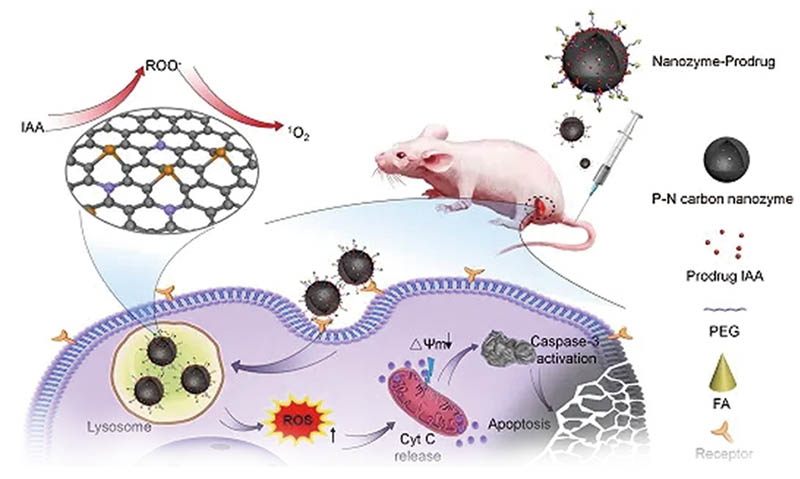Nano enzyme application research and development platform information
Nanomases usually have a similar active center or electron transfer structure to the natural nanomases. The active center endows the nanomases with enzymatic activity or catalytic activity. Nanomases combine the advantages of natural enzymes and nanomaterials, with low cost, high stability, easy amplification and excellent activity, which is suitable for practical applications in harsh environments.
At present, nanomaterials with enzyme-like properties are mainly focused on the rational design of transition metals, precious metals and carbon-based materials. The catalytic mechanism of transition metal nanoenzymes, such as Fe3O4, MnO2, V2O5, MoS2, etc., is Fenton or Fenton-like reaction. •OH generated can be used for degradation of organic pollutants, cancer treatment and biosensing applications. The various enzymatic activities of noble metals can be interpreted as the reaction intermediates O * instead of free radicals constitute the peroxidase simulation reaction. The catalytic activity of carbon-based materials is that carbonyl group acts as the catalytic active site of peroxidase, while carboxyl group is the substrate binding site, and hydroxyl group can inhibit the peroxidase activity.
Monatomic catalysts inherit the advantages of heterogeneous and homogeneous catalysts, which not only have excellent activity and selectivity due to the homogeneity of active site and geometric structure, but also achieve the goals of recycling and maximum atomic utilization efficiency. High performance nanomases constructed with single atomic catalysts are ideal candidates to bridge the gap between natural metalloenzymes and nanomases and open up a new paradigm for the development of nanomases.
Suzhou Beike Nano Nano Nano application research and development platform will provide nano enzyme design and construction services according to the needs of users.

At present, nanomaterials with enzyme-like properties are mainly focused on the rational design of transition metals, precious metals and carbon-based materials. The catalytic mechanism of transition metal nanoenzymes, such as Fe3O4, MnO2, V2O5, MoS2, etc., is Fenton or Fenton-like reaction. •OH generated can be used for degradation of organic pollutants, cancer treatment and biosensing applications. The various enzymatic activities of noble metals can be interpreted as the reaction intermediates O * instead of free radicals constitute the peroxidase simulation reaction. The catalytic activity of carbon-based materials is that carbonyl group acts as the catalytic active site of peroxidase, while carboxyl group is the substrate binding site, and hydroxyl group can inhibit the peroxidase activity.
Monatomic catalysts inherit the advantages of heterogeneous and homogeneous catalysts, which not only have excellent activity and selectivity due to the homogeneity of active site and geometric structure, but also achieve the goals of recycling and maximum atomic utilization efficiency. High performance nanomases constructed with single atomic catalysts are ideal candidates to bridge the gap between natural metalloenzymes and nanomases and open up a new paradigm for the development of nanomases.
Suzhou Beike Nano Nano Nano application research and development platform will provide nano enzyme design and construction services according to the needs of users.

18915694570
Previous: Shanghai University Wa


